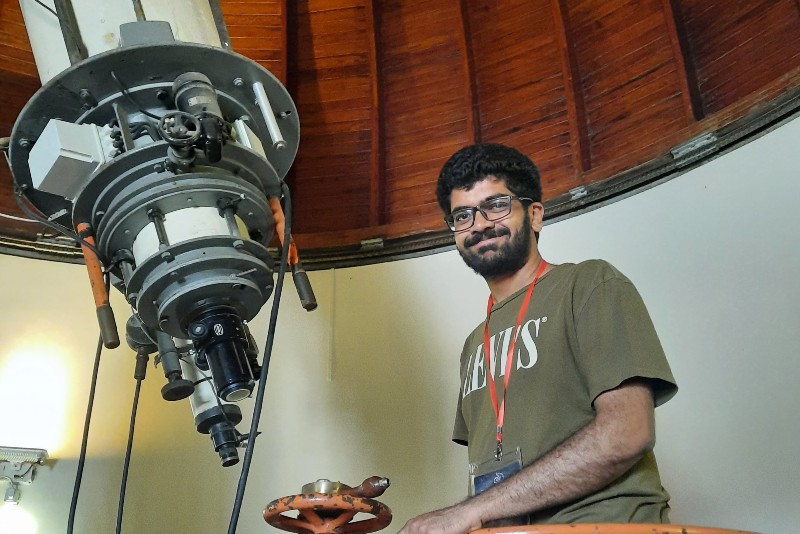
Category: Physics and Astronomy

One of NASA’s FINESST
October 23, 2025 Written by Hilary Douwes | Photo courtesy of Sid Chaini
Doctoral student receives prestigious grant to study the stars
Astrophysics doctoral student Siddharth Chaini is quick to tell you about Annie Jump Cannon and Jocelyn Bell Burnell, pioneers in the history of astronomy. Using his NASA FINESST grant, he hopes to join them as a trailblazer in the field.
FINESST (Future Investigators in NASA Earth and Space Science and Technology) is a prestigious research fellowship that provides funding to graduate students for innovative, self-designed research projects aligned with NASA's goals in Earth and space science. The highly competitive fellowship offers up to $50,000 annually for up to three years to support tuition, travel and research expenses and aims to support the next generation of NASA scientists and engineers. Chaini is one of two UD doctoral students to receive awards this year.
Chaini, working with astrophysics professor Federica Bianco, studies time domain astronomy, examining the patterns of light curves of the sky, looking for changes in brightness or color. Variations in the curves can indicate when a specific event, like the explosion of a star, happened, or even the existence of previously unknown objects.
“We have a data-driven approach to our science, where you keep collecting data and then analyze it,” Chaini said. “This allows you to take past data and see things like where a supernova blew up.”
But there are gaps in the kind of existing data that time domain astronomists use to study the skies, because it comes from sources that were designed to meet different scientific goals and take different variables into account. For example, ground-based observatories may not collect as much data as space-based telescopes because it may be clear one night and rainy the next.
To fill in the gaps, Chaini will use machine learning to create a common feature set from existing data from the ground-based Zwicky Transient Facility (ZFT) in California and NASA’s space-based Transiting Exoplanet Survey Satellite (TESS), which was launched in 2018. While the surveys are very different, Chaini said they complement each other.
Creating this machine learning tool is only the first step, Chaini said. The next is what he calls the “discovery” part of the project, where he uses the tool to look for patterns in the data. Those patterns hold the key to the “seeing” changes happening in the universe and can point to previously undiscovered objects.
Chaini noted that the work is more important and timely as new projects like the new ground-based Vera C. Rubin Observatory Legacy Survey of Space and Time, and the launch in 2027 of NASA’s Nancy Grace Roman Space Telescope will provide mountains of new data about our universe.
Physics isn’t the only field that can benefit from the new machine learning tools, Chaini said. Disciplines like earth sciences and health sciences can apply and modify them to their specific data.
By the end of his two-year grant Chaini hopes to have found a new object in the night sky.
“A lot of the discoveries that have pushed astronomy have been serendipitous, where no one was really looking for a specific pattern in data, but a graduate student found a squiggle in the data and was able to follow it up and suddenly it’s a new class of objects,” he said, smiling. “There has to be something there because we have never seen the universe in this way before, and I want to help find it.”
